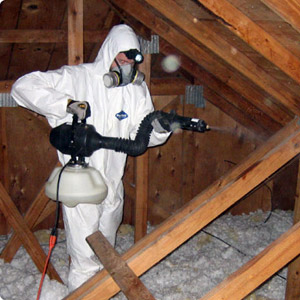In the past, buildings were poorly sealed and poorly insulated. It was said of a house that it “breathed”. In reality, the constructions of that time let air and humidity escape quickly from the building in winter. The air was therefore almost devoid of moisture which did not have time to accumulate. Dry air dried out the house in places where condensation could have formed, preventing the development of mold. The downside with this type of construction was that huge amounts of energy were required to heat the buildings and it was difficult to achieve a stable level of comfort.
In modern constructions, houses are much more airtight and building standards have implemented a series of techniques to maximize energy efficiency. Vapor barrier, better insulation, air barrier, weatherstripping, heat pump are so many materials and equipment which aim to protect the building and to improve our comfort and the performance of buildings. The undesirable impact of this efficiency is that the building retains moisture. It is not so much a problem for the occupants who are better off with a humidity level oscillating at around 50% and 60%, but the buildings do not require the same humidity level.
Since warm air better contains moisture in gaseous form, if the house contains too much moisture, any weaknesses in the insulation or vapor barrier can create areas where the dew point will be reached at unwanted places. For example, when a window, wall or ceiling is not well insulated and becomes cold enough, condensation may occur on the interior surface, making it damp. Modern building codes require that a vapor barrier be installed behind the wall or ceiling to prevent both air and water vapor from passing through the wall. However, some humidity always passes. Where there are holes (e.g. electrical outlets, recessed lights, etc.) or gaps, moist air bypasses the vapor barrier and makes its way through the insulation.
438-800-2046
As the moist air passes through the blown insulation or mattress, the temperature cools as it approaches the outside. It can eventually reach a point below the dew point, where moisture condenses inside the wall or in the attic, causing water and mold damages inside insulation. You should avoid this by minimizing the humidity flow in the wall, insulating well and performing good humidity management in the house.
Homes with little or no insulation can experience condensation that could, in turn, cause mold problems if you make the home very airtight without adding ventilation. We invite you to read the article on mold problems and indoor humidity management for some tips and tricks. You can also contact one of our attics, walls and basement insulation specialists by calling 438-800-2046 or by using our online support service. Mold Removal & Asbestos Remediation EcoRenov: your insulation, mold removal and asbestos abatement specialists.

Insulation:
Ask for advice now!
Ask for advice now!


Related mold removal & mold remediation services

Ask a price quote for your insulation or mold removal project

Learn more about Insulation
8 Good Reasons to Insulate Your Attic
Are you wondering if it's worthwhile to add insulation to your attic? That's a great question! Here are 8 reasons that might just provide [...]
The Dew Point and the Role of Insulation
In the past, buildings were poorly sealed and poorly insulated. It was said of a house that it "breathed". In reality, the constructions of [...]













